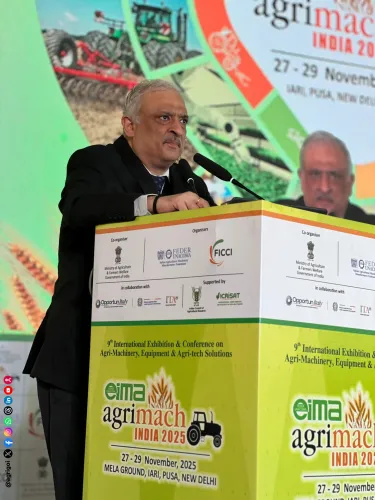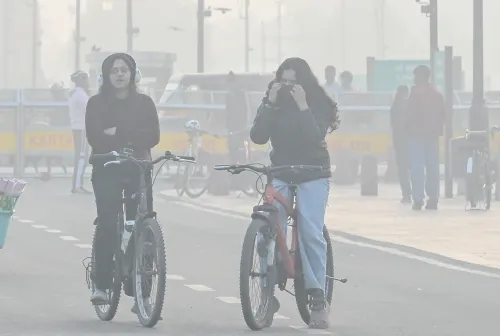How Are Automated Weather Stations and Doppler Radars Enhancing Real-Time Climate Prediction in India?

Synopsis
Key Takeaways
- AWS and Doppler radars are crucial for improving weather forecasts.
- India is aligning its forecasting systems with global best practices.
- The accuracy of forecasts influences public decisions, especially in monsoon-prone areas.
- Dedicated apps for farmers enhance agricultural planning.
- Regional cooperation in weather forecasting strengthens reliability.
New Delhi, July 1 (NationPress) Automated Weather Stations and Doppler radars are significantly improving real-time weather forecasts in India, according to Union Earth Sciences Minister Dr. Jitendra Singh.
In a media briefing, Singh stated that as part of Prime Minister Narendra Modi’s Mission Mausam, India’s weather forecasting capabilities are being substantially enhanced to align with global best practices.
“With the addition of AWS and Doppler radars, we aim to strengthen our real-time weather prediction capabilities,” the Minister explained.
He acknowledged the challenges posed by cloudbursts, which are inherently unpredictable, but emphasized that their forecasting system is evolving with targeted predictions such as Long Range (30 days), Short Range (3 days), and Nowcast (3 hours).
Singh highlighted the accuracy of the forecast system, noting that individuals in monsoon-prone regions like Mumbai often check the IMD’s WhatsApp updates before deciding whether to take an umbrella when leaving home.
Additionally, he spoke about specialized weather forecasting applications designed for farmers and agronomists, asserting that “Our weather forecasts are also utilized by neighboring countries, which further attests to their reliability.”
However, Singh cautioned that the impact of heavy rainfall or flash floods can vary based on local factors affecting vulnerability.
In an update, the India Meteorological Department (IMD) announced that very heavy rainfall is anticipated in Himachal Pradesh, Uttarakhand, Uttar Pradesh, Punjab, Haryana, and Rajasthan over the next six to seven days.
The IMD indicated that the monsoon will remain active in many regions of northwest, central, and eastern India during this timeframe.
During an online press conference, IMD Director General Mrutyunjay Mohapatra indicated that favorable rainfall is also expected in Uttarakhand and Haryana.
“This region encompasses numerous cities and towns, including Delhi. Many south-flowing rivers originate in Uttarakhand, necessitating precautions for all river catchments and urban areas,” Mohapatra cautioned.









